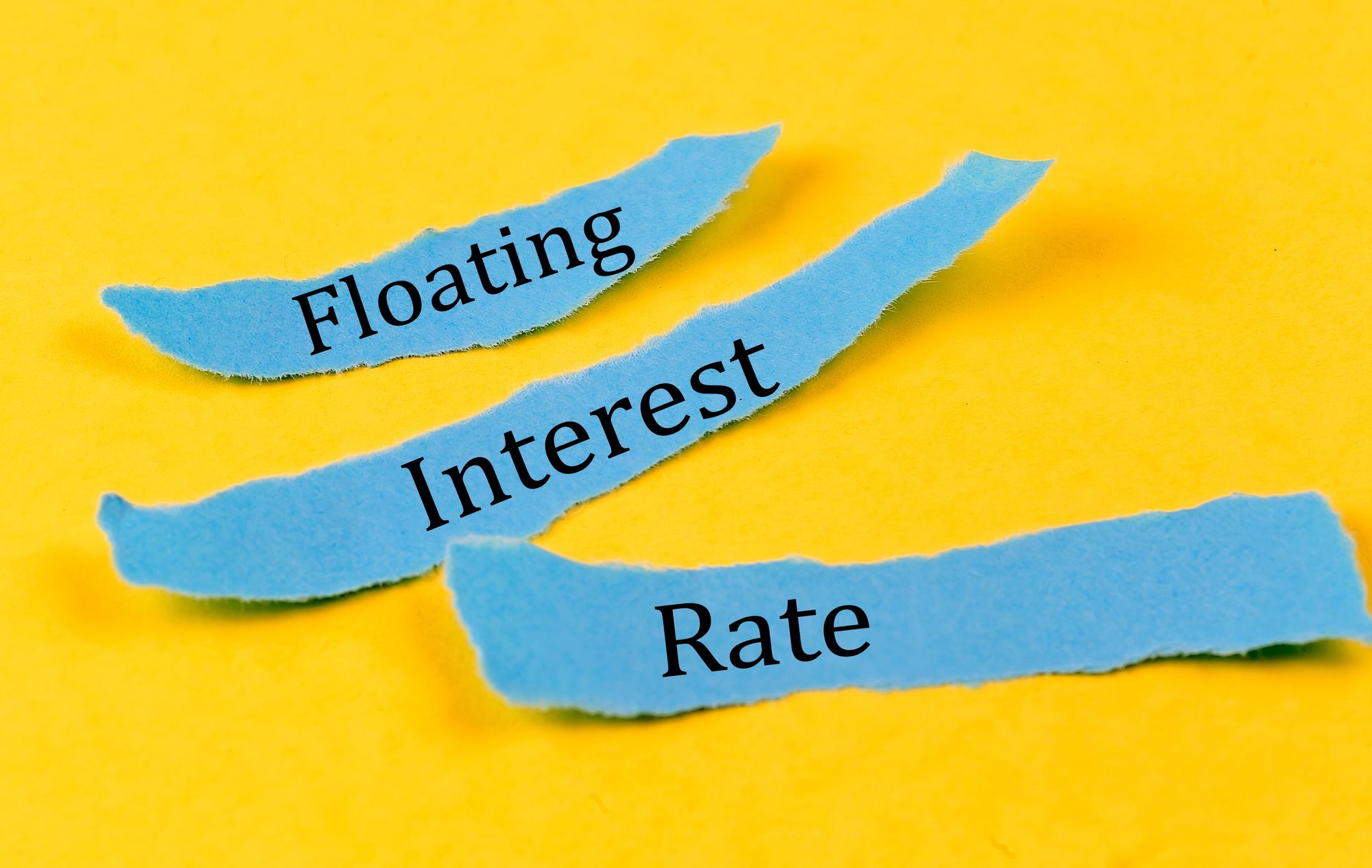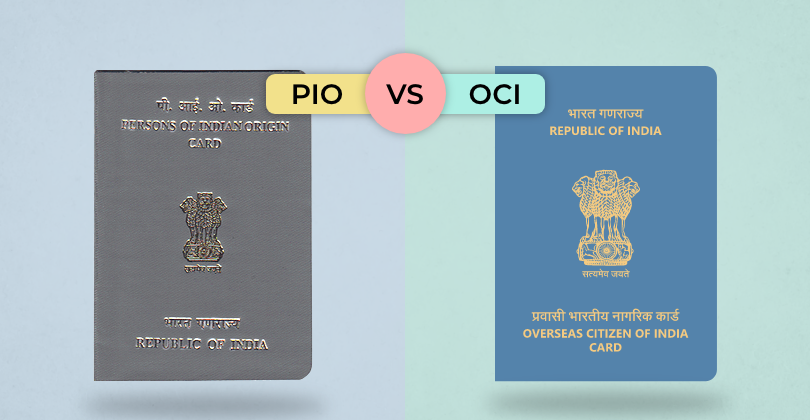Are you of Indian origin and living abroad? You've probably come across terms like PIO and OCI. These cards offer different benefits, but it can
In the world of finance and loans, understanding the different types of interest rates is essential. One of the most common types of interest rates is the floating interest rate, also known as a variable interest rate.
This article aims to provide a comprehensive overview of the floating interest rate, including what it is, how Equated Monthly Instalments (EMIs) are calculated for loans with floating interest rates, how to use a floating interest rate calculator with an example, and the perennial question: which is better, a floating or fixed interest rate?
What is the Floating Interest Rate?
A floating interest rate is an interest rate that can go up and down. Unlike a fixed interest rate that stays the same for your entire loan, a floating rate changes because of things like the economy and market conditions. It can change every year, every few months, or when something big happens, like when the central bank changes its interest rate.
Floating rates are common in things like home loans, personal loans, and certain credit cards. People like them because they often start with lower rates, which means you pay less every month at first. But, here's the catch: the rates can go up, and that means you might pay more each month over time.
The important thing to know is that floating rates are connected to something called a reference rate. This reference rate depends on the type of loan or financial product. For example, for home loans, it might be something like the Prime Lending Rate (PLR), and for credit cards, it could be the London Interbank Offered Rate (LIBOR).
In a nutshell, a floating interest rate is like a roller coaster for your loan—it can go up and down, so you need to be ready for changes in your payments.
How is EMI Calculated for a Floating Interest Rate?
Calculating the Equated Monthly Instalment (EMI) for a loan with a floating interest rate can be a bit more complex than for a fixed-rate loan due to the changing interest rate. However, it can be broken down into manageable steps:
-
Determine the Benchmark Rate: As mentioned earlier, the floating interest rate is linked to a benchmark rate. You need to find out the current value of the benchmark rate. This rate may be published by a central bank or a financial institution.
-
Identify the Spread: The spread is the difference between the benchmark rate and the actual interest rate you're being charged. The lender typically adds a margin or spread to the benchmark rate to determine your interest rate. For example, if the benchmark rate is 6% and the lender's spread is 2%, your interest rate would be 8%.
-
Calculate the Effective Interest Rate: To find the effective interest rate for a specific period, add the benchmark rate and the spread. For instance, if the benchmark rate is 6% and the spread is 2%, your effective interest rate would be 8%.
-
Determine the Loan Tenure: You also need to know the total loan tenure, i.e., the number of months over which you'll repay the loan.
-
Use a Floating Interest Rate EMI Formula: The formula for calculating the EMI for a floating interest rate loan is:
EMI = [P x R x (1+R)^N] / [(1+R)^N-1]
Where:
-
EMI = Equated Monthly Instalment
-
P = Principal Loan Amount
-
R = Monthly Interest Rate (effective interest rate divided by 12)
-
N = Total Number of Monthly Instalments (loan tenure in months)
-
By plugging in the values obtained from steps 1 to 4 into this formula, you can calculate your monthly EMI. Remember that this EMI may change if the benchmark rate changes during the tenure of your loan.
How to Use a Floating Interest Rate Calculator (with Example)
To make calculating EMIs for loans with floating interest rates easier, various online calculators are available. These calculators typically require you to input the following information:
-
Loan Amount: This is the principal amount you want to borrow.
-
Benchmark Rate: The current value of the benchmark rate to which your interest rate is linked.
-
Spread: The lender's margin is added to the benchmark rate to determine your interest rate.
-
Loan Tenure: The total number of months over which you plan to repay the loan.
Once you input these details, the calculator will provide you with the monthly EMI amount. Let us explain this with an example:
Example:
Suppose you want to take out a home loan of $200,000 with a floating interest rate linked to the Prime Lending Rate (PLR), which is currently 6%. Your lender offers a spread of 2%. You plan to repay the loan over 20 years (240 months).
Using a floating interest rate calculator:
-
Loan Amount (P): $200,000
-
Benchmark Rate (PLR): 6%
-
Spread: 2% (0.02 as a decimal)
-
Loan Tenure (N) : 240 months
Calculating the Monthly Interest Rate (R):
-
Effective Interest Rate (R) = Benchmark Rate + Spread
-
R = 6% + 2% = 8%
-
R (monthly) = 8% / 12 = 0.67% (0.0067 as a decimal)
Now, plug these values into the EMI formula:
-
EMI = [P x R x (1+R)^N] / [(1+R)^N-1]
-
EMI = [$200,000 x 0.0067 x (1+0.0067)^240] / [(1+0.0067)^240-1]
Calculating this equation will yield your monthly EMI amount. In this example, the monthly EMI would be approximately $1,452.63.
Remember that this EMI is based on the current benchmark rate and spread. If the benchmark rate changes during the loan tenure, your EMI will also change accordingly.
Pros and Cons of Floating Interest Rates
Floating Interest Rate Pros:
-
Affordability Advantages: Borrowers can initially enjoy more affordable loans with floating interest rates instead of fixed rates, making them an attractive option for budget-conscious individuals. Floating interest rates often come at a discount, usually ranging from 1% to 2.5% less than the corresponding fixed interest rates provided by the same lending institution. This reduced interest rate percentage translates into potential savings on your monthly EMI payments.
-
Unexpected Gains: Opting for a floating interest rate can be advantageous for borrowers, especially when market conditions are in their favour. If market interest rates fall below the base rate, the floating interest rate becomes lower than the base and fixed interest rates. This scenario allows borrowers to take advantage of favourable economic conditions and potentially unexpected gains. Importantly, the risks associated with such a decision are relatively low, as borrowers stand to benefit from unforeseen future opportunities.
-
Financial Flexibility: Individuals who expect to refinance, prepay, or conclude their loans in the short term will find floating rates offer the flexibility to match their financial strategies.
Floating Interest Rate Cons:
-
Uncertainty and Risk: The difference between floating and fixed interest rates lies in the unpredictability of floating rates. Borrowers face the risk of uncertainty as they cannot forecast interest rate fluctuations, potentially leading to higher monthly payments.
-
Potential Payment Increases: When market rates rise, borrowers with floating interest rates may experience sudden and significant spikes in their interest costs. This risk could strain budgets and financial plans.
-
Complex Financial Planning: When considering fixed vs. floating interest rates, the flexibility of floating interest rates becomes evident. It can also lead to more complex financial planning, as borrowers must accommodate potential changes in interest expenses. The fixed or floating interest rate which is better dilemma often depends on one's financial planning skills and willingness to navigate these complexities.
Which is Better: Floating or Fixed Interest Rate?
Deciding between a floating or fixed interest rate depends on your financial situation and how comfortable you are with taking risks. Here's what you need to know
-
Risk Tolerance: If you're okay with your monthly payments going up and down, a floating rate could work for you. But if you like predictability and don't want surprises, go for a fixed rate.
-
Market Conditions: Pay attention to what's happening with interest rates. If they're expected to stay low or even drop, a floating rate can save you money. On the other hand, if rates are going up, a fixed rate keeps your payments steady. You can look at past interest rate trends to get an idea of where they might be headed.
-
Budgeting: If you want to know exactly how much you'll pay each month, a fixed interest rate is the way to go. It makes budgeting easier.
-
Loan Length: How long you're borrowing the money matters too. Short-term loans are less affected by rate changes, so floating rates can be okay. For long-term loans, a fixed rate gives you peace of mind over the years.
-
Prepayment Rules: Some loans with fixed rates charge you extra if you want to pay off your loan early. Floating-rate loans usually offer more flexibility in this regard.
Remember, there's no one-size-fits-all answer. It all depends on what works best for your money goals. Some people even split their loans, part fixed and part floating, to get a bit of both worlds – stability and potential savings.
Conclusion
Understanding the nuances of floating interest rates is crucial when navigating the world of loans and credit. By learning to calculate EMIs for floating-rate loans and studying your individual financial circumstances, you can make a sound decision about whether a floating or fixed interest rate is right for you.
Remember that financial markets can be unpredictable, so staying informed and regularly reassessing your loan options is a wise strategy to effectively manage your finances and ensure your financial well-being.
AUTHOR
KreditBee As a market leader in the Fintech industry, we strive to bring you the best information to help you manage finances better. These blogs aim to make complicated monetary matters a whole lot simpler.







